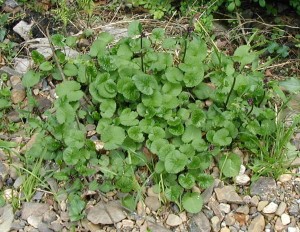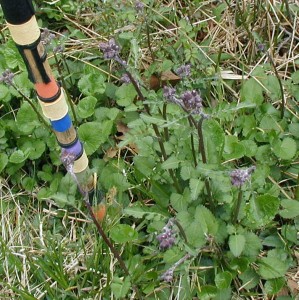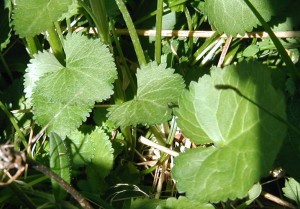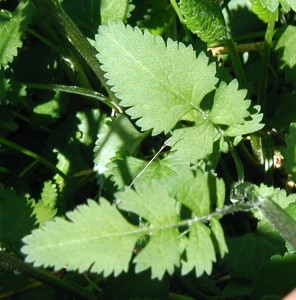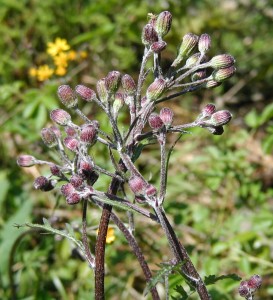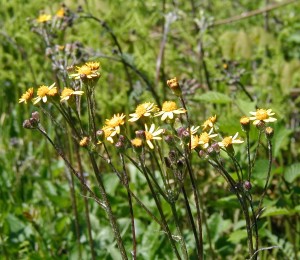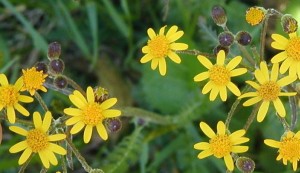While driving along a country road in the mountains the other day, I happened upon a few striking clumps of blue flags, also known as blue iris. I’ve previously posted about the alien yellow iris that we have growing wild in Central Pennsylvania.
The deep colors of this blue iris certainly were eye-catching. These flowers were beautifully displayed at the side of a country road. Perhaps someone planted them there years ago. They appear to be a form of the Bearded Iris, Iris germanica, which isn’t native to North America.
A different plant, called the Larger Blue Iris, Iris versicolor, is native to North America, and it can be found growing wild from Canada south to Ohio and Virginia. You’d be more likely to find this native iris in wet meadows, marshes and swampy places. Its upright petals and falling sepals are not as wide as the german bearded irises, which are represented in the photos below. The Larger Blue Iris has large petals that are held vertically but do not fold over the top of the center of the flower like many of the colorful irises available at garden centers. It also has veins of yellow among its striking colors of blue and white.
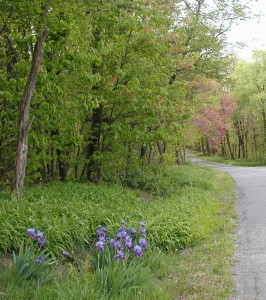
Just as with its cousin, the Yellow Iris, I. pseudacorus, the growth habit is in clumps. Several sword-like leaves arranged in a fan-shape are at the base of the plant. The whole plant may reach 2-3 feet tall with the leaves being somewhat shorter than the flower stalk.
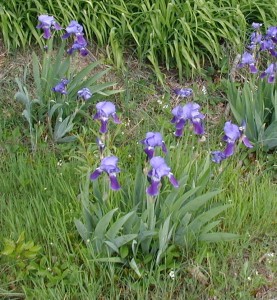
Each flower stem is smooth and round and usually gives rise to more than one flower. Flowers emerge from a tightly rolled bud.
(Click on any photo to see a larger image.)
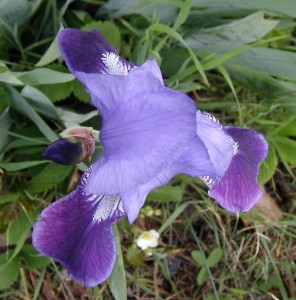
Each iris flower looks great for one day and then fades to let another take its place the next day.
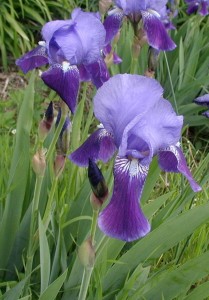
The bearded irises have a streak of fuzziness along the midline of the falling sepals. The photo above highlights the white beard on these particular flowers.
The day that these pretty blue iris flowers made me stop along the road, privet shrubs were blooming and giving off their sweet smell of Spring.
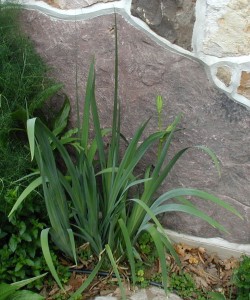
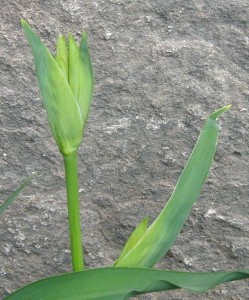
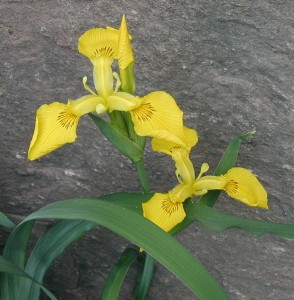
![Reblog this post [with Zemanta]](http://img.zemanta.com/reblog_e.png?x-id=f22caf92-ef77-43dd-91c5-9cfbfdbd26bf)
